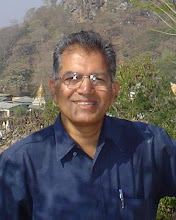Our Indian philosophy syllabus in Divyadaan is very much a reproduction of what was being done in Jnana Deepa Vidyapeeth, Pune, when we were students there. It is thus heavily weighted in favour of the written tradition, which is also the dominant tradition of Brahminic Hinduism for the most part - except perhaps the last part, the Contemporary Indian Philosophy, which draws on a mixed bag.
It is also rather strictly restricted to the 'philosophical' aspect of the dominant tradition, leaving aside the 'religious' aspects, the itihasas, the puranas, the folklore, the rituals, the stories, the myths, the legends, all the spice of Hinduism. That, I suppose, JDV used to relegate to the theology department, and we in a small way to the course called 'Religions of India.' (In this sense, Religious Hinduism, ed. Neuner and De Smet, was more balanced.)
We would need to integrate: the 'religious'; the political and economical (Chanakya, for example); the aesthetic; and so on.
And we would need to look out for the subaltern basis / context upon which all this arises. Maliekal used to do a good job on this in Karunapuram.
Friday, 19 February 2010
Subscribe to:
Post Comments (Atom)

Dear Ivo,
ReplyDeleteCastilino was kind enough to show me this comment on the Subaltern Ferment in Vishwa Jyothi at Karunapuram. Not that it "used to be". It still is on, though I have to swim against the current to keep it on. Of course, it bears fruit, when the students reach the Theology levels.
Maliekal